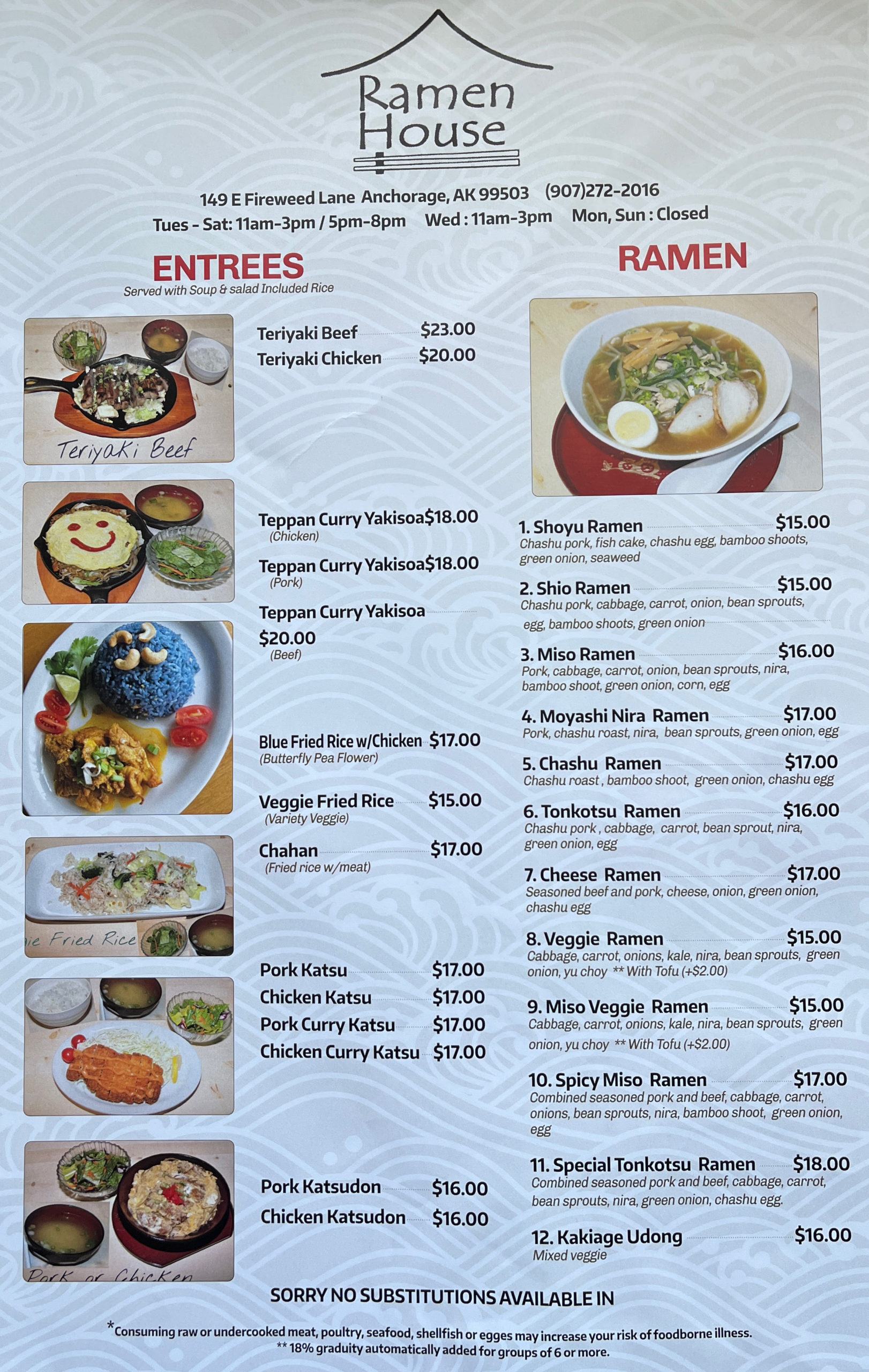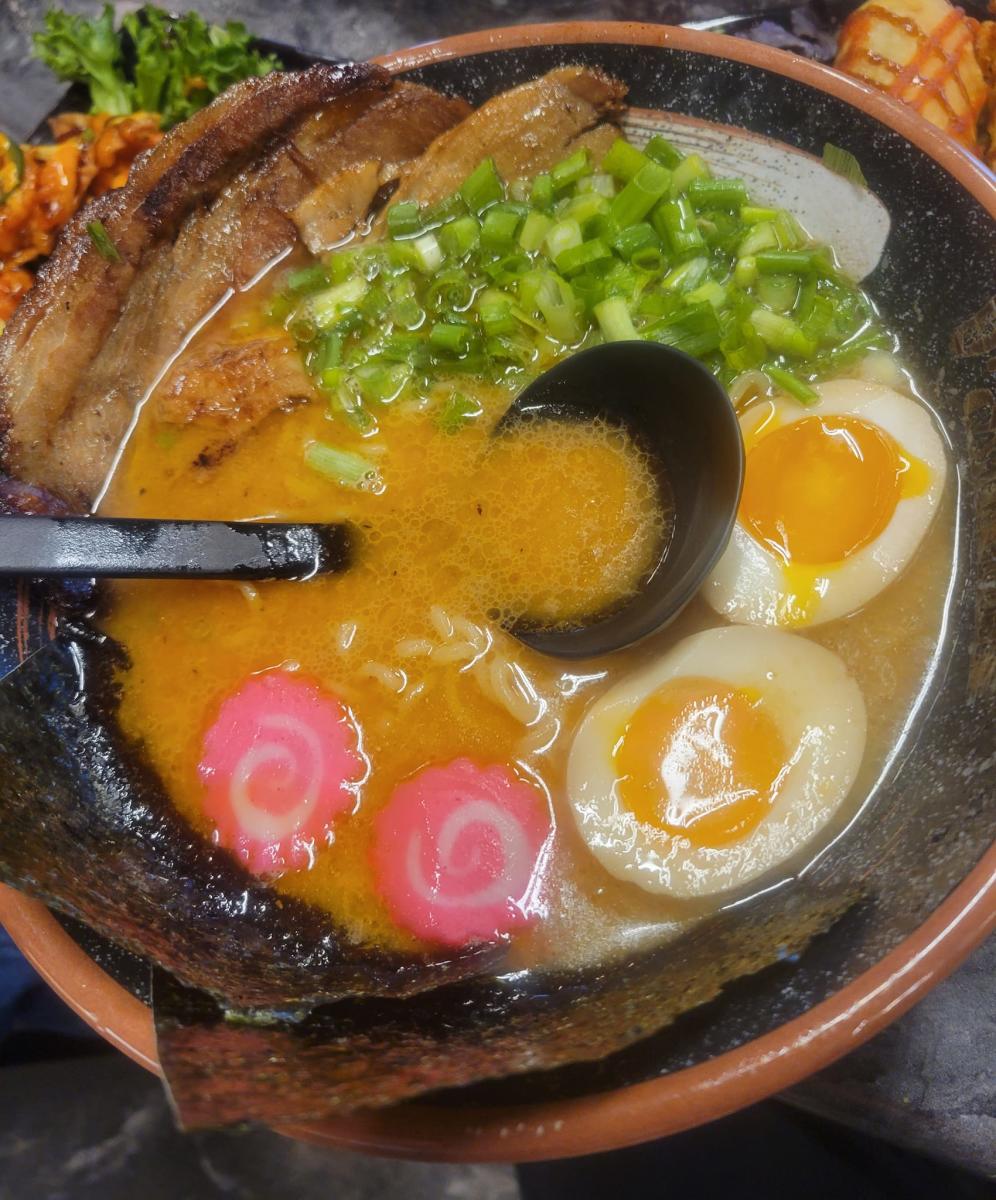Table Of Content

This build-your-own ramen shop ensures everyone can get exactly what they want for the perfect bowl of noodles. Even gluten-free diners can rejoice over the gluten-free noodle option, or vegan diners can opt for vegetarian and tofu options. There’s also 18 different toppings to select from including fried onion chips and soft-boiled egg.
Main Types of Ramen: By Tare
Tsukemen Aizen’s deluxe offering serves thinly shaved pork in a flower-like formation, along with a mound of thick noodles, spinach, lotus root, and boiled eggs. The star — a side bowl of fishy, umami-riddled dipping broth — coats every dipped noodle with an explosion of salty, fatty flavor. Sourcing high-quality ingredients is the focus at Little Big Diner, which sells a variety of pork and chicken ramen, as well as vegetarian pumpkin ramen with roasted delicata squash and spiced pepitas. The ramen shop is run by the same team that also owns another popular spot a few steps down the block, Jinny’s Pizzeria. A velvety pork bone broth, tender pork slices, perfectly cooked noodles, and an array of toppings create a symphony of flavors that keeps patrons coming back for more. Close to me there is a restaurant called Issho Ni Ramen in Willoughby, Ohio.
A Popup Dining Series
This family-owned restaurant has been a part of the Phoenix dining community for 14 years and running, sharing its delicious Japanese fare. There’s so much on the menu, from sushi to lobster, but diners can’t get enough of the shio ramen, which is topped with yakibuta pork, bamboo, green onion, narutomaki, and wakame. From hole in the wall restaurants with fresh-made noodles to trendsetting ramen havens — there’s no shortage of slurp shops to grab a bowl. Below, find a guide to the top picks for warm, comforting ramen. The buns, from succulent pork belly to crispy chicken karaage, promise a delightful burst of flavors in every bite.
Vegetarian Ramen
Each of them is straightforward to make and has received rave reviews from our readers. You’ll find plenty of cooking tips, including substitutes for vegetarians and vegans to make modifications as suited. Clint and Yoko Tan’s church of noodles has gotten plenty of hype, making reservations difficult to come by. Still, the award-winning couple’s food is worth seeking out if price is no issue, and interested parties can get a taste on specific dates if they plan far in advance (reservations available on Tock).
About Ramen House
Shio means salt, so shio ramen is seasoned simply with salt tare. The soup is clear, delicate, and light as it is simmered more slowly to concentrate the flavor and prevent cloudiness. The broth is often made with chicken broth (sometimes with the addition of pork bones) and flavored with dried sardines, dashi stock, bonito flakes, seaweed, and vegetables. When you go to a ramen shop or ramen-ya in Japan, you’ll often see ramen being categorized by the type of tare used in a particular bowl.


Tucked inside a strip mall along Western Ave. in Koreatown, this sleek, modern ramen bar has six different ramen on the menu, but the one you want is the spicy shoyu tonkotsu. For those who fear the heat, know it’s more rich than spicy, filled with a decadent pork broth that’s been simmered for 24 hours. The noodles have a nice chew and the thick slabs of pork belly chashu floating on top basically melt the second they hit your mouth. Round out your meal with their equally excellent shrimp katsu sandwich and a pint of crisp Japanese craft beer. Two of the main components of the ramen broth (kaeshi, the soup base and dashi, the soup stock) are freshly made in-house.
13 Slurp-worthy Bowls of Ramen That Are Available for Takeout in San Francisco - Eater SF
13 Slurp-worthy Bowls of Ramen That Are Available for Takeout in San Francisco.
Posted: Wed, 25 Oct 2023 07:00:00 GMT [source]
Bowls
While in the U.S., we have David Chang and Ivan Orkin, who popularize ramen with their endeavors. Soy milk, miso, sesame seeds, and spicy chili bean sauce—these are the secret ingredients to make a pot of vegetarian ramen so rich and satisfying that you’d never guess it was devoid of meat. Coco’s is a cozy black-and-red izakaya with lanterns glowing from the windows on upper Mission as it crosses into Bernal.
Experience True Authentic Ramen
If you’re a fan of roasted bone marrow, there’s an option to add it as a flavorful side. Unlike the other spots on this list, this popular Richmond District izakaya-like spot is actually a Korean fusion restaurant rather than a place that purports to serve purely Japanese food. San Francisco’s thunderously good ramen scene is a mix of internationally acclaimed ramen chains, solid local brands, and high-end, sought-after options, such as the tasting menu at Noodle in a Haystack. Grabbing a bowl at Marufuku in Japantown or Mensho Tokyo on Geary Boulevard is always a smart move — though you’ll find neither on this map in an effort to highlight some less obvious options. Head to any of these 13 excellent ramen shops in San Francisco for a worthy bowl. This tsukemen specialist took over sister restaurant Aizen Udon, which moved to the Little Tokyo Marketplace a few blocks over.
Chashu Ramen$14.50
It’s also pretty basic, but in the actual basic sense, not in the person who only wears sweatpants and Stan Smiths sense. Inside the Mitsuwa food court in Mar Vista, you line up, place your order, and wait for them to call your number over the loudspeaker. You should be getting the Hokkaido-style shio (salt) ramen, which is a little lighter than other bowls around.
Established in 2023, we are on a culinary journey through the dynamic and rich tapestry of Asian cuisine. Our name is a tribute to the fifth taste, known as “umami”, which creates a deep, satisfying sensation of savoriness. It is this distinct taste that we seek to honor and elevate in each of our dishes, hence the birth of our fusion ramen experience.
This ramen favorite prides itself on its traditional Japanese fare. Not only did the owner and chef Jay Zhou earn his chops learning to make ramen in Nishikawa, Japan, but the noodles are also made fresh from scratch using a Japanese machine. Choose from classics like miso and shio ramen, or try one of the specialties. The Nishikawa Black is a popular option made with pork broth, pork chasu, green onion, menma, kikurage, black garlic oil, fried onion, sesame seeds, seasoned egg, and nori, served with straight noodles. For extra flavor, opt for more of the homemade black garlic oil.
The team also runs Gantetsu-Ya, a casual takoyaki and okonomiyaki shop in the same building. Just like other ramen hotspots, this place is small and can get busy quickly; go in small groups. Isshindo had big shoes to fill, taking over the space of the beloved Pikaichi at Super 88. Once a beloved ramen destination in the Super 88 Food Court, Pikaichi has since settled into Medford as its permanent home. Pikaichi serves eight types of ramen, two of which have a vegetable-based broth. Heat-seekers should opt for the spiciest ramen on the menu, the jigoku ramen; the word jigoku means “hell” in Japanese and is adopted by ramen shops to describe the spiciest variety on its menu.
As one would expect, soup is the elemental factor that determines the greatness of a bowl of ramen. Ramen masters put a great deal of effort into concocting their soup. Ramen shops in Japan are simple eat-and-go restaurants, not a place to linger long after your meal. It’s usually counter seating, where you buy a meal ticket at the entrance and hand it to the staff.
You might be able to find Hakata ramen internationally as the Ippudo ramen shop offers it on its global menu. You can serve the noodles with toppings like mushrooms (I used a mix of shimeji and shiitake mushrooms), ramen or soft-boiled egg, fish cake, sliced pork, or katsuobushi. With umami-packed clear soup and a simple stir-fried pork and vegetables topping, tan-men is amazingly easy to make. Miso soup initially developed in Hokkaidothe in Northern Japan. Miso soup used in Ramen noodle is a thick, nutty, slightly sweet and very hearty soup. Our Miso soup is faithful to the original miso flavor you may encounter in Hokkaido.Curry broth is miso base with added flavorful yellow curry paste.

No comments:
Post a Comment